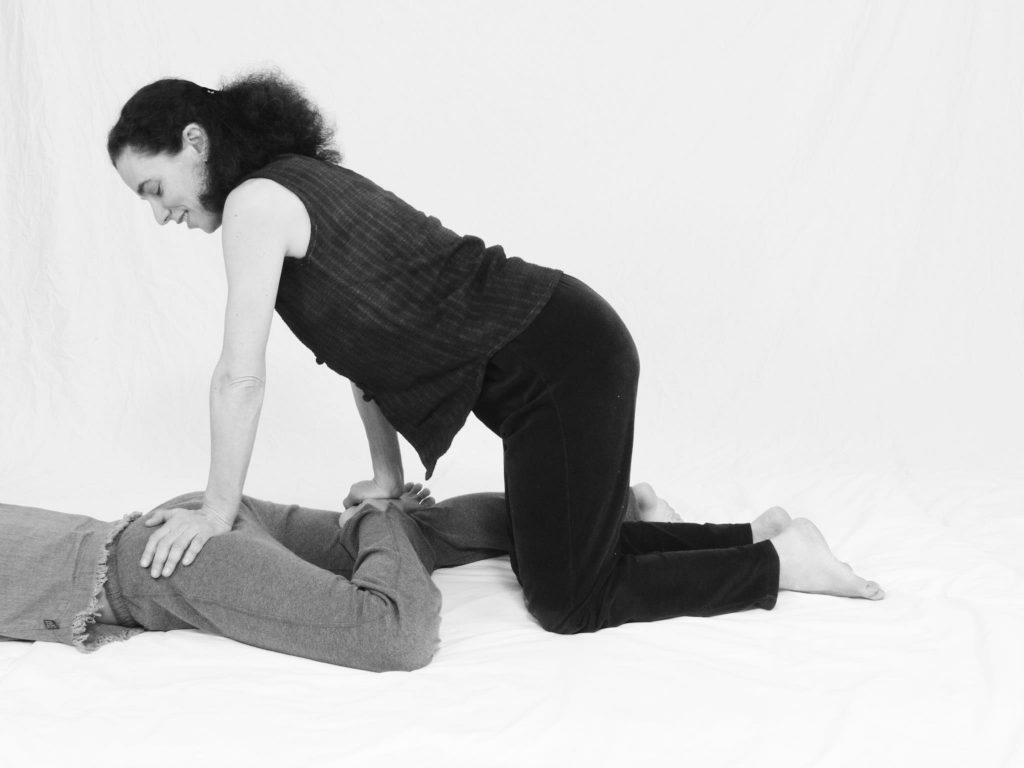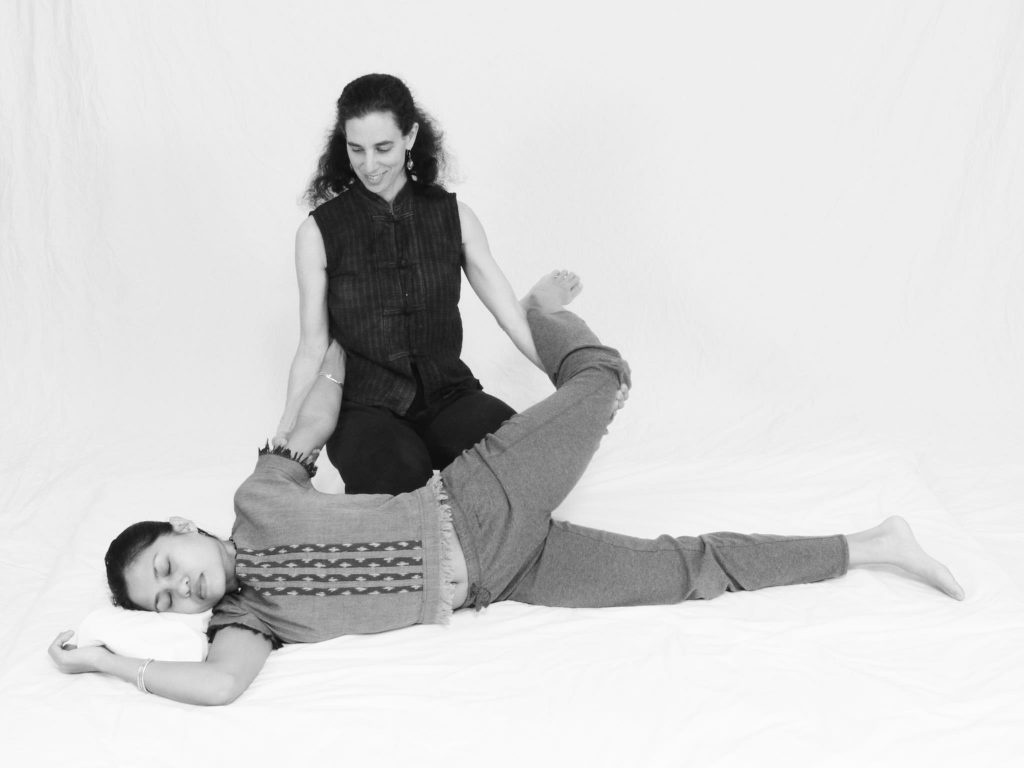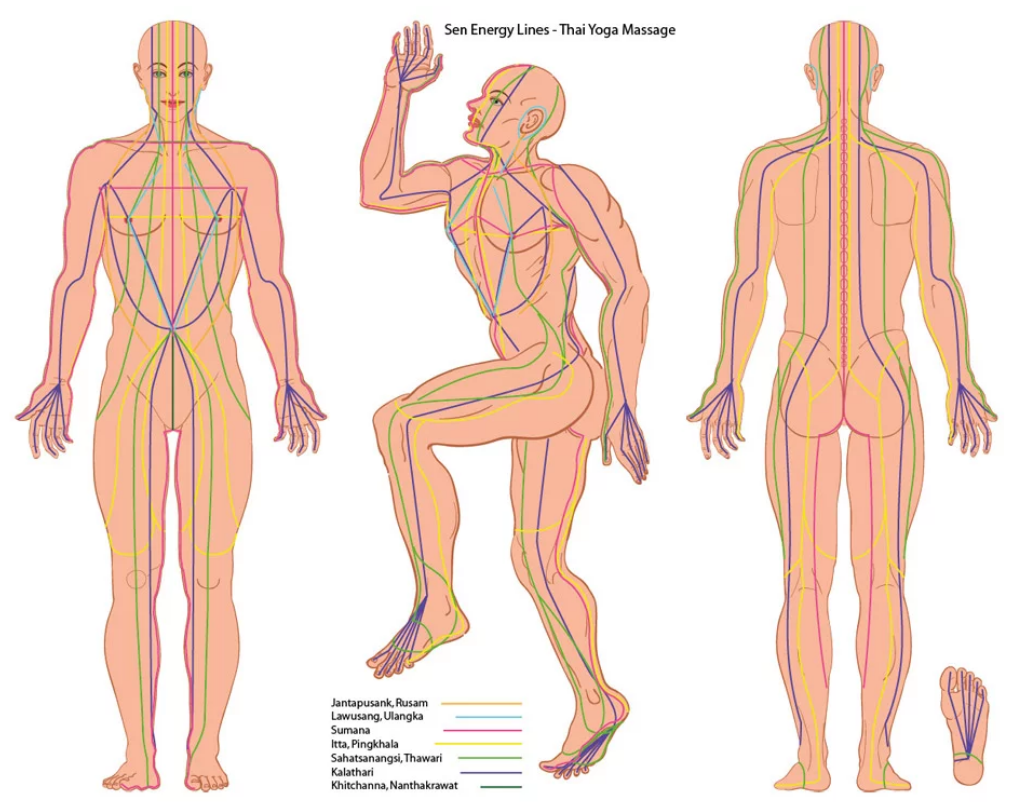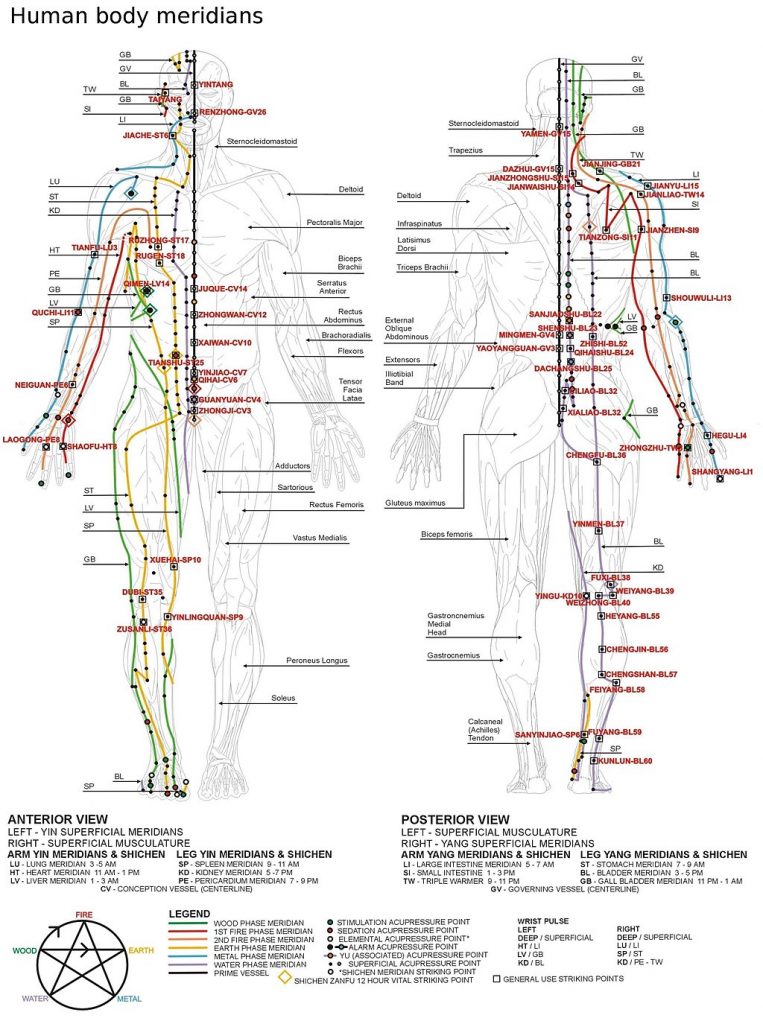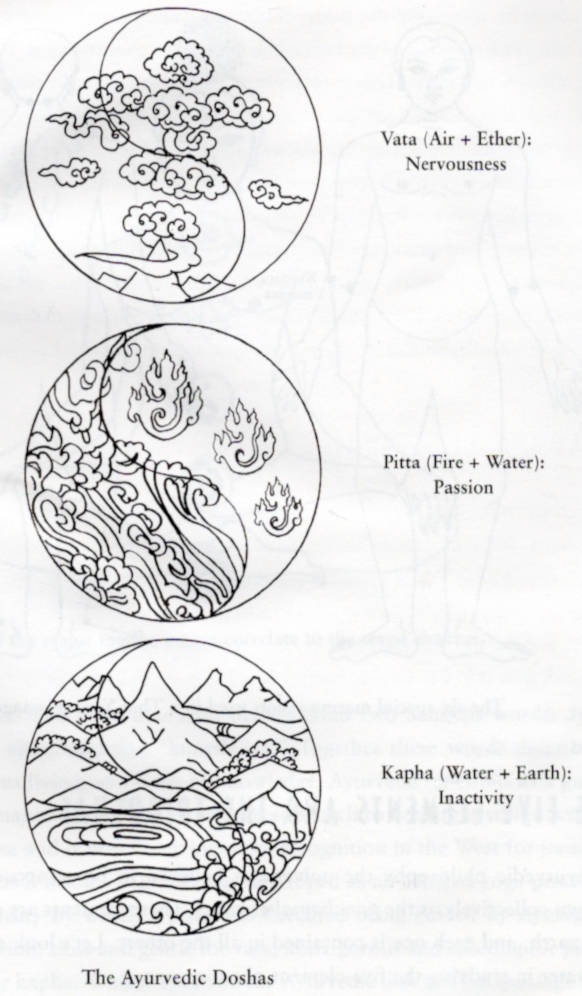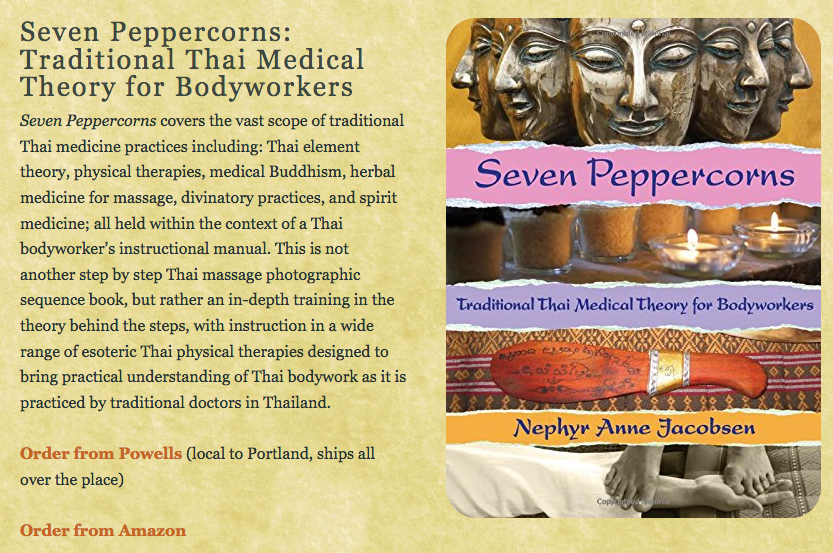This is the tricky part. There is no general agreement between practitioners and schools on exactly what the Sen are or on the paths they take through and across the body. There are said to be 72,000 lines but most people are familiar with just ten of them, the Sip Sen. There is at least some general agreement about the paths of the Sip Sen through the body.
Contrary to Western style massage, traditional Thai massage does not primarily work with the physical body but rather with the energy body of man.
Harald Brust (Asokanada) History of traditional Thai Massage
In her book Thai Massage: Sacred Bodywork, Ananda Apfelbaum explains that there’s no satisfactory English translation of ‘Sen’ so we need to use an array of words to describe the concept. These include conduit, channels, fibres, filaments, narrow ridge, line, sinew and tendon. ‘Sen’ is also a prefix for anatomical Thai words for ‘lymphatic’, ‘blood vessel’, ‘artery’ and ‘vein’. Apfelbaum suggests that the best English word to use would be ‘conduit’. This encourages us to think of flow and movement through the body rather than specific anatomical structures.
The different lineages and schools of Thai massage vary quite dramatically in their approach to the Sen. Until you understand this, it is very confusing to be a new student trying to learn them – because the answer you get depends on whom you ask.
Here are some quotes from established teachers on how they interpret the Sen:
For our intentions, my favorite explanation is that a Sen is a “physical pathway by which movement occurs in the body.”
For the most part, Sen are tangible structures. Most of the Sen that we work with in the body are tendons, ligaments, veins, nerves and arteries. They also also sometimes refer to muscular and fascial pathways.
Nephyr Anne Jacobson in her book Traditional Thai Medical Theory for Bodyworkers, Findhorn Press 2015.
Thai texts mention red, black and white Sen. which correlate roughly with arteries, veins and nerves. However, the main Sen used in Thai massage seem to correlate most strongly with networks of myofascial tissue (which structural integrations call the ‘anatomy trains’). The lines for the most part follow the grooves in between muscles, connecting important insertion points to one another.
Dr. C. Pierce Salguero and David Roylance in their book Encyclopedia of Thai Massage — A Complete Guide to Traditional Thai Massage Therapy and Accupressure, Findhhorn Press 2011
The word ‘Sen’ in the Thai language means string, or pathway. It is the movement of energy along these channels that maintains health. The ‘Sen Sip’ are the most important channels in the human body….
The body is a vehicle to access the human energy system, so relying entirely on anatomy to find the lines can create confusion. Where there is injury, illness or damage to the body, the sen can change their qualities. Maps and line charts cannot show you exactly where the individual Sen lie; this is something you must feel and sense and learn when you touch your client’s body.
Felicity Joy in Thai Massage and Thai Healing Arts by Bob Haddad, Findhorn Press 2013
Energy flows freely around a normal, functionally healthy body. Every second, you are consciously and unconsciously perceiving your environment and responding to the feelings and impulses that arise from your perceptions.
If you feel love for the person you are with, you will direct your energy towards the person, your relationship and your feelings for them. In this state, you often have a certain glow, and can be quite magnetic — other people will generally feel good around you. If you are fearful, your energy will be directed towards defence, protection and escape. When you are sad, the energy will be focused on the source of the pain — so it will be directed inwards, towards the experiencer of the pain.
When these emotional states become chronic, the energy that is normally only temporarily directed to a transient state gets stuck. Most of us are familiar with people who seem to be fixed in a state of defence or attack, or who seem locked into a state of overwhelm or low energy — and we have probably experienced this ourselves. Our body initially responds appropriately to the situation: it’s good to defend yourself and loved ones against an external threat, and resting when you’re tired and stressed is the right thing to do. Problems arise when these responses become chronic, remaining long after the threat or stress has passed. When this happens, the flow of energy around the body declines and this is expressed as habitual tension patterns, imbalances, constricted movement and poor posture.
*The word ’Energy’ in this context is rather meaningless, but there isn’t a good substitute that includes both the mental phenomenon of attention and the physical condition of ease of movement in the body. In a healthy state we can easily shift our attention from one activity to another and maintain it when necessary; we can move our physical body fairly easily. When we are more challenged, attention is rigid and stubborn or so flighty we can’t achieve anything and our bodies don’t easily respond to what’s required of them — perhaps fidgeting and unable to stay still, or so heavy and slow that even the tiniest movement seems like a monumental effort.
In place of the non-specific ‘energy’, the correct term to use in Thai Massage is ‘Lom‘ or Lom Pran. This is similar to chi in Chinese medicine and prana in yogic systems. If this flow of Lom is in any way impeded by blockages or breaks in the Sen, you will experience less-than-optimum health.
Long-held tensions in muscles and connective tissues – as described above – can result in such blockages.
Breaks in the Sen can be caused by injuries such as sprains and tears in connective tissue.
The goal of Thai Massage is to correct the Lom imbalances by stimulating the affected Sen to activate the body’s natural healing process and thereby restore your full function and vitality.


